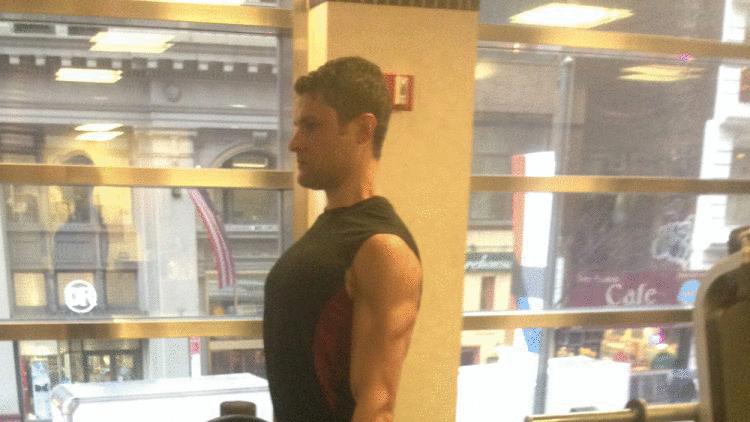9 of the Hardest and Best Exercises from Real Trainers
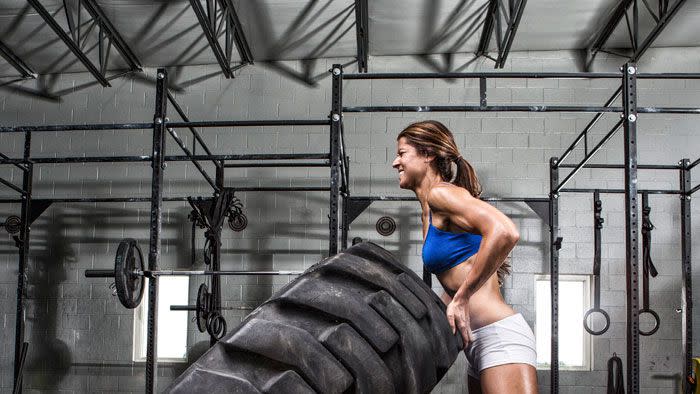
Corbis Images
No matter how much of a gym rat you are, there are a few moves you just hate doing. Think: squat variations that burn more than you ever thought possible, tricep moves that make your arms feel like they're going to fall off, or sprint drills you genuinely think will cause you to pass out. And no one knows this feeling better than the people barking at you to churn out one more.
Trainers know better than anyone that the pain will be worth the pay off. (Proof: The Top 50 Hottest Trainers in America.) So we asked some of our favorite trainers what moves even they love to hate. And while that makes this a list of seriously hard moves, it's also a list of exercises that guarantee serious results. So grit your teeth and dig in to these 9 moves that challenge even the fittest of the fit.
Prisoner Get Ups
This exercise fires up your whole core while activating the entire chain of muscles in your back-especially your lower back. And that's all while working on your balance and agility.
How to do it: Lie flat on your back with hands placed behind head, elbows outwards. Knees are touching floor with feet crossed, like in a sitting cross-legged position. Using lower ab muscles, bring torso forward until the heels of feet are close to your butt. With your hands behind your head, hinge at your hips to get up off the floor and stand up straight in one swift motion, without using your hands-just your legs. (Need to modify? Place your hands on the ground to help assist when lifting off of the floor.)
-Shaun Robert Jenkins, head coach at Tone House in New York City
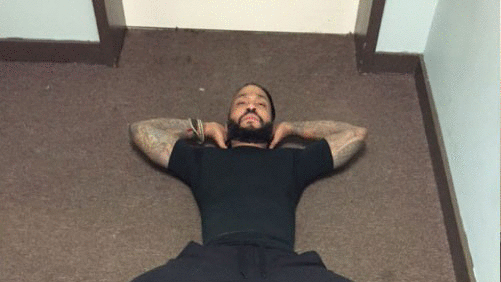
Bodysaw
This is a great move to target all the muscles of your torso, and, depending on your position, also your shoulders. Start with your feet in a TRX or on valslides (or even with your feet over a foam roller!), and progress to a stability ball for more of a challenge.
How to do it: With feet in TRX straps or on valslides, get into a forearm plank, elbows beneath shoulders. Engage core and, keeping forearms perfectly still, begin to move hips backward. Shoulders are moving away from wrists and elbows are in front of body, all while maintaining a straight line from ears to ankles. Don't go so far back as to feel your low back kick in. Saw back to starting position.
-Tristan Rice, performance specialist at the human performance training facility EXOS in Phoenix, AZ
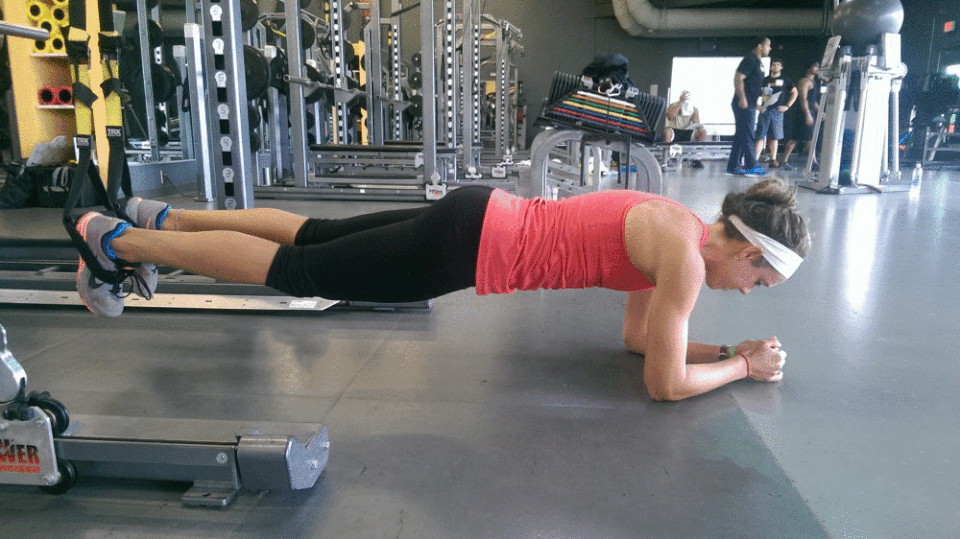
Dumbell Thruster
This is a great, explosive movement with core stabilization throughout to challenge your whole body. It helps to improve shoulder and hip flexibility, gets your blood flowing and builds strength.
How to do it: Hold a pair of dumbbells at the top of a bicep curl (elbows bent, weights right in front of face). Squat to full depth. As you come up, press dumbbells overhead so at the top of the movement you are standing tall, arms fully extended over shoulders, squeezing quads, glutes, and abs. Descend back down to full squat while simultaneously lowering dumbbells back, so that at the bottom of your squat the dumbbells have returned to the starting position.
-Albert Matheny, R.D., co-founder of and trainer at Soho Strength Lab in New York City
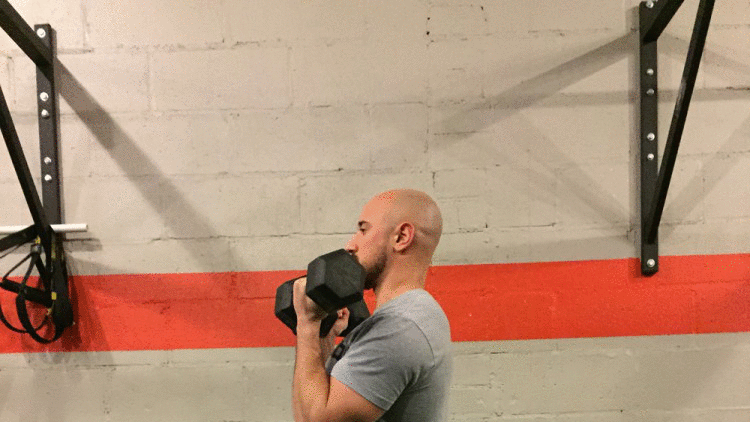
Dumbbell Lateral Lunge
Lunges generally mean work because of their dynamic nature, recruitment of the most powerful muscles (glutes, core and entire leg), and challenge to stability with their asymmetrical demands. Changing the orientation of that lunge to the side engages the other muscles in your glute more than a typical squat or forward lunge would, helping to better shape that bum and improve hip mobility and stability. (Want to make it harder? Add a dumbbell to further engage the core and make this primarily lower body exercise into a total body movement.)
How to do it: Standing upright, step to the right with right foot, keeping toes forward and feet flat. Squat through right hip while keeping left leg straight. Squat as low as possible, holding this position for 2 seconds. Push back to the starting position and repeat to the opposite side.
-Maureen Key, performance specialist at the human performance training facility EXOS in Philadelphia
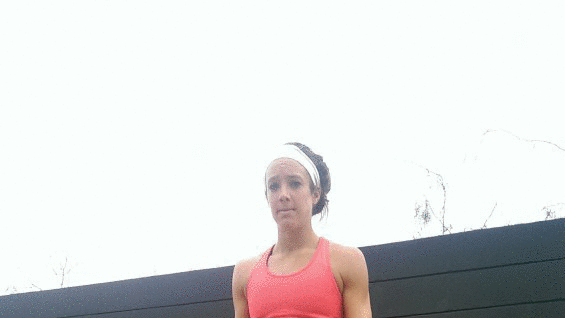
Pistol Squat Get Ups
This exercise targets your quadriceps. It also activates your core and just about every other muscle in your lower body, including your glutes, hamstrings, and calves.
How to do it: Balance on left leg. Hold right leg out in front so heel is just off the floor. Using leg strength and balance, start to lower into a squat, keeping right heel just above the floor the entire time. Keep hands out in front of body to help balance. Squat down until hamstring touches your calf, then release butt to floor. Lay flat on back with left knee bent and right leg straight. Hinge forward with some momentum, using hands to help push up back into the pistol squat then stand tall. Switch legs and repeat.
-Shaun Robert Jenkins, head coach at Tone House in New York City
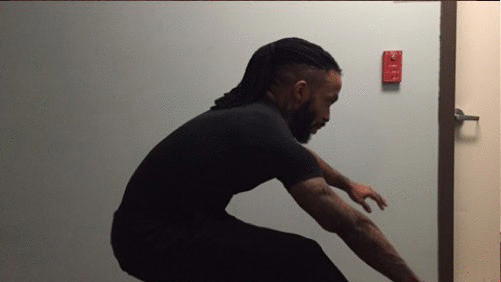
Lateral Step-Ups with Medicine Ball
The key benefit of this dynamic, strength-training and heart-pumping variation of step-ups is that it's performed in a natural movement, which helps you avoid injuries. The continual stepping up and down means that a range of lower body muscles are engaged: quadriceps, hamstrings, calves, glutes, ab muscles, and lower back muscles, as well as biceps from holding a medicine ball or hand weights. Want to make it harder? Raise the height of the step or the weight you carry. (Use this tool more! Medicine Ball Workout: 9 Moves to Tone Every Inch.)
How to do it: Stand on left side of a bench, parallel to it, holding the medicine ball or hand weights close to your chest. Lean slightly forward and lift right leg onto bench. Lift left leg up to meet the right and immediately move right leg to the floor on the other side. Remember to extend landing leg as far out from the bench as possible to feel the burn in your quads and glutes. With left leg still on the bench, move right leg up to meet it. Now the left leg moves to the floor, while the right remains on the bench.
-Jimmy Minardi, founder of Minardi Training
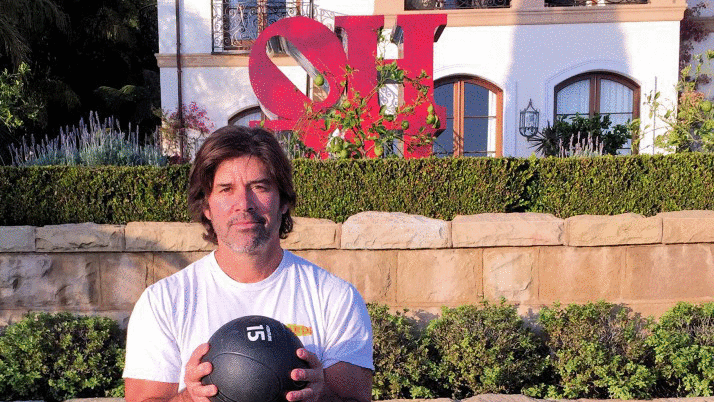
One Arm Kettlebell Press
This move requires completely activates your hip, torso, and shoulders. It integrates stability throughout the core with shoulder mobility, as it works through a full range of motion of these muscles. When done correctly, you'll feel this almost more in your torso than you will in your shoulder, giving a great secondary ab burn. It can be very easily progressed or regressed by simply changing the weight. (If you don't have kettlebells, you can try this with a dumbbell.) (Want more kettlebells? Check out this 20-Minute Fat-Burning Kettlebell Workout.)
How to do it: Place your feet shoulder-width apart and stand with kettlebell in front of right foot. Push your hips back and grab the kettlebell with risk hand so your palms are facing your body. Keep your butt down and your arms fully extended. Keeping your core tight, drive through your heels to lift the kettlebell while keeping your chest tall. Once the weight passes your knees, explosively extend the ankles, knees, and hips. As the kettlebell rises, shrug your shoulders and continue to lift the weight, keeping it as close to your body as possible. Bring the kettlebell to your right shoulder, with your right elbow pointed directly at the floor, rotating your wrist as you do so, so that the palm faces inward. This is a kettlebell clean. Look at the kettlebell and press it up and out until it is locked out overhead, rotating your arm so your wrist faces away from your body. Make sure that your torso remains upright as you press the Kettlebell overhead, restricting any backward extension of the torso. Lower the kettlebell back to your shoulder under control, and repeat.
-Tristan Rice, performance specialist at at the human performance training facility EXOS in Phoenix, AZ
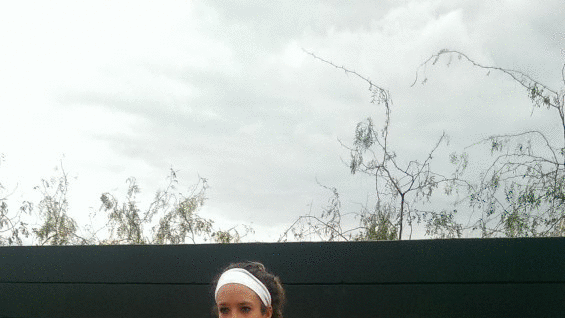
Lunge Jumps + Standing Lunge Hold
Hard? Yes! Effective? Yes! This lower body combo will have your glutes firing and your lower body feeling the burn!
How to do it: Start in a split stance with your hands down, torso upright, and back knee bent at 90 degrees. Front knee is aligned with front heel. Explosively push off front foot, bringing lower body off the ground. While in mid-air, switch the positioning of feet. Allow back knee to bend as you land softly with opposite foot now forward. After 20, land softly in a split stance. With hands on hips and torso upright, lower hips by bending back knee to a 90 degree angle. The front knee should stay aligned with front heel, allowing majority of weight to drop through the heel of the foot that is forward. Hold that position for 30 seconds, then and hold that position for 30 seconds. Switch legs and hold lunge for another 30 seconds, then finish with one more set of lunge jumps.
- Jessica Wilson, owner of Wilson Fitness Studios in Chicago
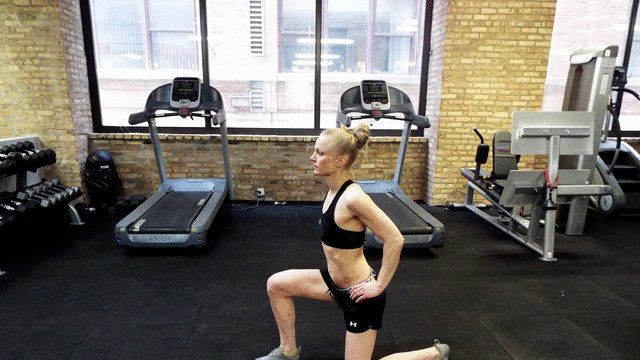
Deadlift
One of the exercises I find most difficult are dead lifts because they challenge your body more than almost any other exercise, which in turn yields the best results. Not only is this a move that occurs in every day life (picking up your kids, for example), but it also helps to improve your muscle density and strength-and revs up your metabolism for weight loss. (This is a great move for people with knee problems. See more with 10 Knee-Friendly Lower-Body Toners.)
How to do it: Stand with feet hip-width apart. Hinge at hips and lower chest to ground, grasping the barbell placed in front of shins. Explode up by pushing heels into the ground while thrusting hips forward. Maintain a flat back and tight core as you perform the exercise to avoid lower back injury. Pause at top, then lower barbell back to ground and repeat.
-Evan Kleinman, Tier 3 Equinox Personal Trainer
